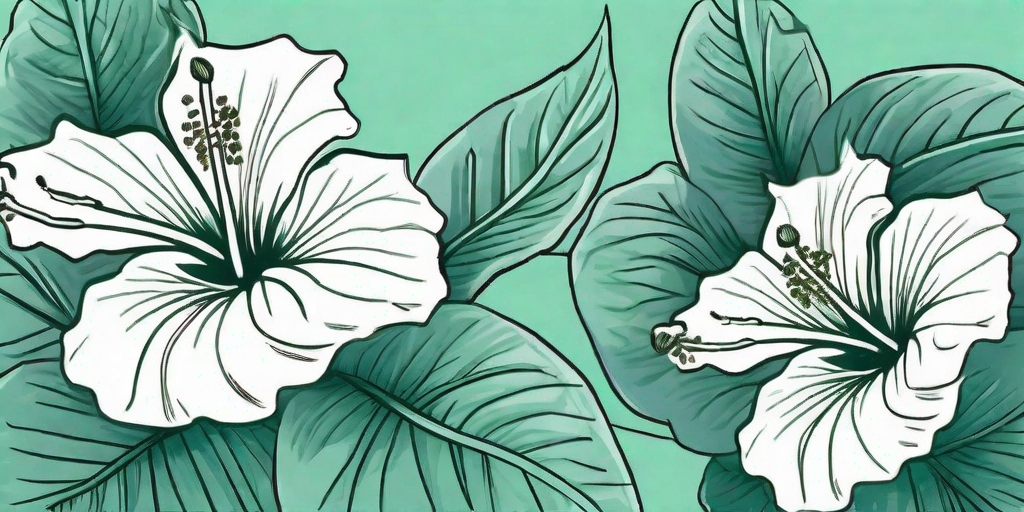
If you're a proud plant parent of a hibiscus, you might have noticed a rather disconcerting phenomenon: your hibiscus shedding its buds. Before you hit the panic button, let's take a deep breath and dive into the world of hibiscus care. This guide will help you troubleshoot the problem and get your plant back to its blooming best.
Understanding Your Hibiscus
First things first, let's get to know your hibiscus a little better. The hibiscus is a tropical plant known for its large, vibrant flowers. But like any diva, it can be a bit high maintenance. It needs just the right amount of light, water, and nutrients to keep those stunning blooms coming.
When your hibiscus starts shedding its buds, it's not trying to give you a hard time. It's just its way of telling you that something's not quite right. So, let's roll up our sleeves and play plant detective.
Common Causes of Bud Drop
There are several reasons why your hibiscus might be dropping its buds. Let's take a look at the usual suspects.
1. Incorrect Watering
Watering is a bit of a Goldilocks situation. Too much or too little, and your hibiscus will protest by shedding its buds. Hibiscus plants prefer their soil to be consistently moist but not waterlogged.
If you're unsure about your watering routine, try sticking your finger into the soil. If it's dry an inch below the surface, it's time to water. If it's soggy, you might be overdoing it.
2. Insufficient Light
Hibiscus plants love the sun. If your plant isn't getting enough light, it might start dropping its buds. Try moving your plant to a brighter location, but avoid direct sunlight, which can scorch the leaves.
Remember, your hibiscus is a bit of a sun worshipper. It needs at least six hours of bright, indirect light each day.
3. Nutrient Deficiency
Your hibiscus needs a balanced diet to produce those gorgeous blooms. If it's lacking in certain nutrients, it might start shedding its buds. A quality, slow-release fertilizer can help provide the nutrients your plant needs.
But be careful not to over-fertilize. Too much of a good thing can be harmful. Follow the instructions on the fertilizer package to avoid overdoing it.
How to Prevent Bud Drop
Now that we've identified the common culprits, let's talk about how to prevent bud drop in the future.
1. Establish a Regular Watering Routine
Consistency is key when it comes to watering your hibiscus. Try to keep the soil consistently moist, but avoid overwatering. Remember the Goldilocks rule: not too much, not too little, just right.
Consider investing in a moisture meter to help you gauge when it's time to water. These handy devices can take the guesswork out of watering.
2. Provide Adequate Light
Ensure your hibiscus gets plenty of bright, indirect light. If you're growing your hibiscus indoors, consider using a grow light to supplement natural light, especially during the darker winter months.
Remember, your hibiscus is a sun-loving plant. It needs at least six hours of light each day to thrive.
3. Feed Your Hibiscus Well
Provide your hibiscus with a balanced, slow-release fertilizer to ensure it gets the nutrients it needs. But remember, moderation is key. Over-fertilizing can do more harm than good.
Follow the instructions on the fertilizer package to ensure you're feeding your hibiscus the right amount.
FAQs
Let's tackle some of the most frequently asked questions about hibiscus bud drop.
1. Can a hibiscus recover from bud drop?
Absolutely! Bud drop is usually a sign of stress, not a death sentence. Once you've identified and addressed the cause, your hibiscus should bounce back.
2. Can I use any type of fertilizer for my hibiscus?
While hibiscus aren't too picky about their food, they do best with a balanced, slow-release fertilizer. Look for one that contains micronutrients like iron, magnesium, and manganese.
3. How often should I water my hibiscus?
There's no one-size-fits-all answer to this question as it depends on your specific conditions. However, a good rule of thumb is to water when the top inch of soil feels dry.
Conclusion
So there you have it, a comprehensive guide to troubleshooting hibiscus bud drop. Remember, your hibiscus isn't trying to give you a hard time. It's just trying to tell you something. So listen to your plant, adjust your care routine as needed, and before you know it, your hibiscus will be back to its blooming best.
Happy gardening!















